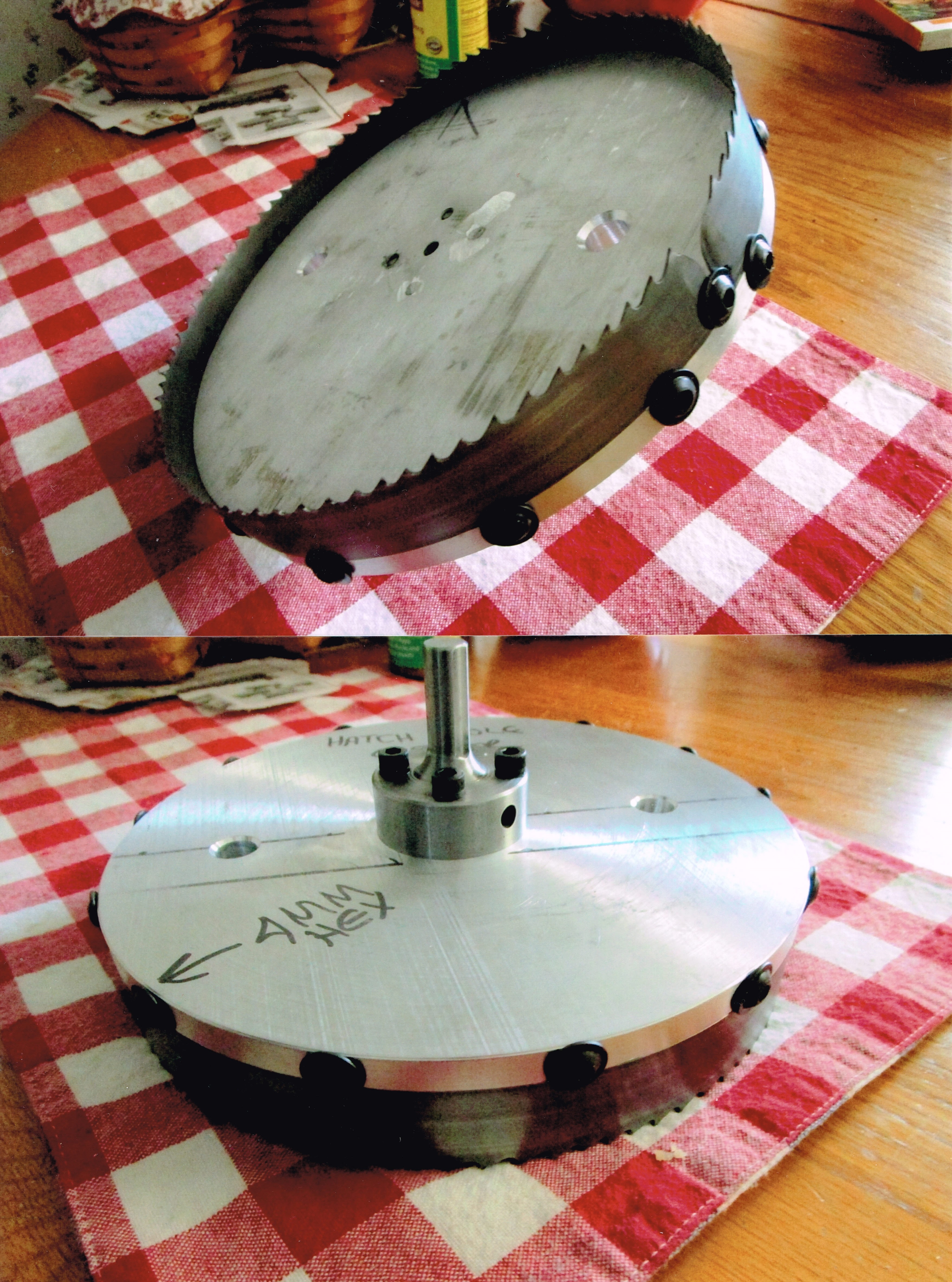
Peter E. Nuskey, a Southampton, Pa.-based mechanical consultant and custom machining veteran, wrote that he received a request for a 8.312"-dia. hole saw saw to cut holes in 1/4"-thick, multiple-wall polycarbonate. Saws this size are not commercially available, according to Nuskey.
He made one out of 3/4"-thick aluminum and a 1 1/4" bandsaw blade. The blade is held on the aluminum with pan head screws set at a 5° angle to pinch the blade into the corner of the rabbit in the aluminum disc.
"In this day and ago of micrograin carbide, diamond tooling and 800-ipm feed rates, sometimes solutions are found in old-school methods," Nuskey stated. "Try not to forget the methods our fathers used."
The hole saw produced a hole in 6 seconds. The previous method with a sabre saw would take 6 minutes.
He can be reached at (215) 355-3391.
Related Glossary Terms
- bandsaw
bandsaw
Machine that utilizes an endless band, normally with serrated teeth, for cutoff or contour sawing. See saw, sawing machine.
- bandsaw blade ( band)
bandsaw blade ( band)
Endless band, normally with serrated teeth, that serves as the cutting tool for cutoff or contour band machines.
- feed
feed
Rate of change of position of the tool as a whole, relative to the workpiece while cutting.
- sawing machine ( saw)
sawing machine ( saw)
Machine designed to use a serrated-tooth blade to cut metal or other material. Comes in a wide variety of styles but takes one of four basic forms: hacksaw (a simple, rugged machine that uses a reciprocating motion to part metal or other material); cold or circular saw (powers a circular blade that cuts structural materials); bandsaw (runs an endless band; the two basic types are cutoff and contour band machines, which cut intricate contours and shapes); and abrasive cutoff saw (similar in appearance to the cold saw, but uses an abrasive disc that rotates at high speeds rather than a blade with serrated teeth).






